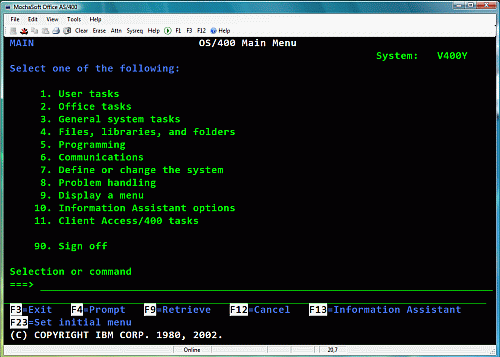
Windows 7 Thin Pc X64 Download
Download New Windows 7 Version, Windows Thin PC (WinTPC) in Q1, 2011 Quote: By the end of March 2011 Microsoft will offer the first taste of a new version of Windows 7 tailored to the needs of customers with virtual desktop infrastructure (VDI) environments. Simon haykin solutions.
 Last month, Microsoft released a Community Technology Preview (CTP, in essence a public beta) of something called Windows Thin PC. This business-oriented operating system’s given purpose is both to allow older, less-capable PCs take advantage of some of Windows 7’s core features, and to allow cost-conscious organizations the ability to convert existing hardware into thin clients. Windows Thin PC isn’t actually a new product: it is, more or less, a rebranded version of Windows Embedded Standard 7, an awkwardly named product sold only to OEMs for use in, well, embedded systems: think thin clients, cash registers, and web kiosks, to name a few. There are two main things that separate Windows Thin PC from Windows Embedded Standard 7: its name (though the Windows Embedded moniker still lingers on in a few places) and its licensing (where Windows Embedded was sold to OEMs only, Windows Thin PC is being made available to Microsoft’s volume licensing customers. Consumers, sadly, can’t get their hands on either OS legally). While Windows Thin PC isn’t going to be something you deal with unless you work for a thin client-oriented organization heavily invested in Microsoft technology, I wanted to take a close look at the OS to see what techniques it uses to reduce its footprint and resource usage.
Last month, Microsoft released a Community Technology Preview (CTP, in essence a public beta) of something called Windows Thin PC. This business-oriented operating system’s given purpose is both to allow older, less-capable PCs take advantage of some of Windows 7’s core features, and to allow cost-conscious organizations the ability to convert existing hardware into thin clients. Windows Thin PC isn’t actually a new product: it is, more or less, a rebranded version of Windows Embedded Standard 7, an awkwardly named product sold only to OEMs for use in, well, embedded systems: think thin clients, cash registers, and web kiosks, to name a few. There are two main things that separate Windows Thin PC from Windows Embedded Standard 7: its name (though the Windows Embedded moniker still lingers on in a few places) and its licensing (where Windows Embedded was sold to OEMs only, Windows Thin PC is being made available to Microsoft’s volume licensing customers. Consumers, sadly, can’t get their hands on either OS legally). While Windows Thin PC isn’t going to be something you deal with unless you work for a thin client-oriented organization heavily invested in Microsoft technology, I wanted to take a close look at the OS to see what techniques it uses to reduce its footprint and resource usage.
Windows Thin PC makes a case for a Windows that’s more cloud-friendly and modular than classic fat-client Windows, something that the platform is going to need if Windows needs to run on everything from your monstrous eight-core workstation to your Atom or ARM-powered tablet. System Requirements and Features First, let’s talk about the sort of computer that can run Windows Thin PC.
This is no “”-style OS designed to run using just megabytes, but a very Windows 7-like OS system requirements identical to the standard version of the OS. To wit: Windows Thin PC (32-bit) Windows 7 Ultimate (32-bit) Processor 1 GHz x86 processor 1 GHz x86 processor RAM 1 GB RAM 1 GB RAM Hard disk 16 GB available hard disk space 16 GB available hard disk space Graphics card DirectX 9 card with WDDM 1.0 driver DirectX 9 card with WDDM 1.0 driver In practice, the OS needs fewer resources than what’s listed here, but you’re still not going to get this running on the Pentium II box stashed in your attic. Windows Thin PC takes up much less hard drive space than Windows 7, as we'll see later, but in terms of CPU and memory usage it's much more similar. This isn't going to somehow make running Windows on an Atom processor any less of a slog. The benefit to keeping Windows Thin PC so similar to standard Windows is that businesses already heavily invested in a Microsoft backend – Active Directory, local Windows Update servers, Microsoft’s image development and deployment tools, and the like – can use the same technology they already have to setup, lock down, update, and otherwise manage the OS. Thin PC can also take advantage of the full range of Remote Desktop features, up to and including the recent additions made to the client and server in Windows 7/Server 2008 R2 Service Pack 1.